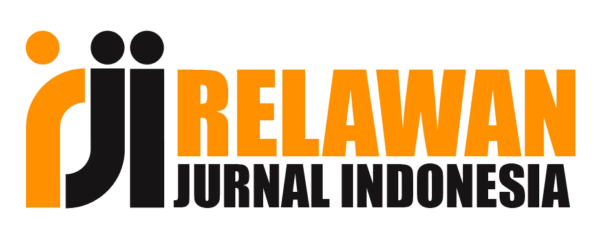PENGEMBANGAN KONTEN MATERI LISTRIK MAGNET ADAPTIF UNTUK CALON GURU
Abstract
ABSTRAK
Pengembangan konten adaptif bertujuan agar setiap peserta mendapat materi sesuai dengan tingkat pengetahuan masing-masing. Berdasarkan kenyataan bahwa tingkat pengetahuan berhubungan dengan tingkat kesulitan materi. Hal ini dapat ditunjukkan dengan hasil tes peserta. Peserta dengan tingkat pengetahuan lebih tinggi dapat menyelesaikan persoalan yang lebih sulit yang ditunjukkan dengan hasil tes yang lebih baik. Hasil pengembangan dinilai oleh pakar dan guru untuk mengetahui tanggapan ahli dan guru terhadap materi yang dikembangkan. Hasil penilaian ahli dan guru menunjukkan bahwa materi adaptif yang dikembangkan baik sedangkan kualitas materi yang dikembangkan dinilai dari uji ide pokok. Hasil uji ide poko menunjukkan bahwa tingkat keterpahaman siswa tingga. Dari hasil penilaian ahli dan guru serta uji ide pokok yang menunjukkan hasil yang baik maka materi dapat digunakan sebagai materi untuk e-learning adaptif.
Kata Kunci: Pengembangan konten, listrik magnet, calon guru
ABSTRACT
Adaptive content development aims to have each participant receive material according to their own level of knowledge. Based on the fact, the level of knowledge is related to the degree of material difficulty. This can be demonstrated by the participants' test results. Participants with higher levels of knowledge can solve more difficult problems which are indicated by better test results. Development results are assessed by experts and teachers to find out the expert and teacher responses to the developed material. The results of expert and teacher assessments show that adaptive material is well developed while the quality of the material developed is judged by the test of the underlying idea. The poko idea test results show that the level of student's comprehension is. From the results of expert and teacher assessment as well as test the main ideas that show good results then the material can be used as material for adaptive e-learning.
Keywords: Content development, magnetic electricity, prospective teachers
Full Text:
PDF (Bahasa Indonesia)References
Angell, C., Guttersrud, Ø., Henriksen, E. K. & Isnes, A. (2004). Physics: Frightful, but fun, Pupils’ and teachers’ views of physics and physics teaching [Electronic version]. Science Education, 88, 683- 706.
Ornek, F., William R. R, and Mark P. H (2008), What makes physics difficult? IJESE, 2008, 3 (1), 30 – 34
Tanel, Z and Ero, M, 2008, “Students’ Difficulties in Understanding the Concepts of Magnetic Field Strength, Magnetic Flux”, Latin-American Journal of Physics Education, Volume 2 (1)
H. Roussel, M. H´elier, 2012, Difficulties in teaching electromagnetism: an eight year experience at Pierre and Marie Curie University, Advanced Electromagnetics, Volume 1(1)
Grubišić. A, Stankov. S, and Žitko. B, 2013, “Stereotype Student Model for an Adaptive e-Learning System” World Academy of Science Engineering and Technology International Journal of Computer and Information Engineering Vol:7(4), 2013
Bhaskaran and Swaminathan F. (2014). “Intelligent Adaptive E-learning Model for Learning Management System”, Research Journal of Applied Sciences, Engineering and Technology 7(16): 3298-3303
Mahnane, L., Tayeb, M., L. & Trigano, P. (2013). “A Model of Adaptive e-learning Hypermedia System based on Thinking and Learning Styles”. International Journal of Multimedia and Ubiquitous Engineering. 8, (3)
Brusilovsky, P. (1998). Methods and techniques of adaptive hypermedia. In Adaptive hypertext and hypermedia (pp. 1-43). Springer, Dordrecht.
Eltigani, YA M& Mohamed, S,M, 2011, “An approach to Adaptive E-Learning Hypermedia System based on Learning Styles (AEHS-LS):Implementation and evaluation” International Journal of Library and Information Science” 3(1), 15-28
Huang, Y., Yang, B.W., Adams, R., Howell, B., Zhang, J.Z., & Burbank, K. (2008), Teaching Electromagnetic Fields with Computer Visualization, Proceedings of The 2008 IAJC-IJME International Conference
Tseng, Judy C.R. , Chu, Hui-Chun, Hwang, Gwo-Jen, Tsai Chin-Chung, 2008, “Development of an adaptive learning system with two sources of personalization“,Computers & Education vol 51 pp.776–786
Hakim, L. (2016). Variability and Correlation of Agronomic Characters of Mungbean Germplasm and Their Utilization for Variety Improvement Program Lukman Hakim. Indonesian Journal of Agricultural Science, 9(1), 24-28.
Caruth, G. D. (2013). Demystifying Mixed Methods Research Design: A Review of the Literature. Online Submission, 3(2), 112-122.
DOI: https://doi.org/10.17509/wapfi.v3i1.10987
Refbacks
- There are currently no refbacks.
Copyright (c) 2018 Wahana Pendidikan Fisika
The Journal Wahana Pendidikan Fisika http://ejournal.upi.edu/index.php/WapFi/ is licensed under a Creative Commons Attribution-ShareAlike 4.0 International License
The Journal WaPFi (Wahana Pendidikan Fisika).
All rights reserverd. pISSN 2338-1027 eISSN 2685-4414
Copyright © Faculty of Mathematics and Science Education (FPMIPA) Universitas Pendidikan Indonesia (UPI)









